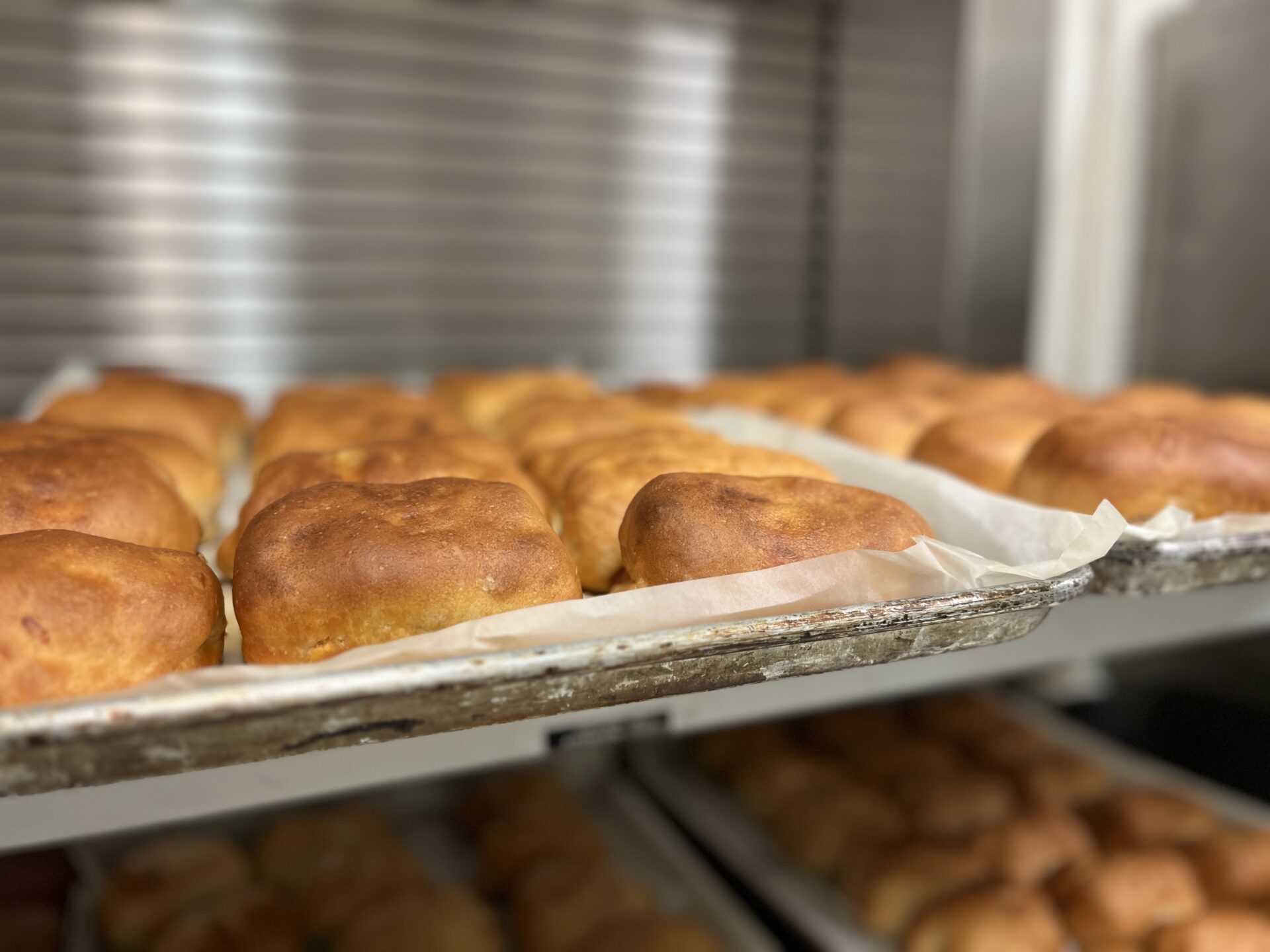If you’re hungry for a pepperoni roll in West Virginia, you can find one at just about any gas station, but how did they get so popular?
In Pennsylvania, the lure of one particular sweet treat gives hikers on the Appalachian Trail a break on their journey and a challenge that requires a strong stomach.
We also “spill the tea” on a classic roadside attraction that’s been around for generations.
You’ll hear these stories and more this week, Inside Appalachia.
In This Episode:
- The Riddle Of The Pepperoni Roll
- A Half Gallon At The Halfway Point
- Snorkeling In The Hills Of Appalachia
- Spilling Some Tea About The World’s Largest Tea Pot
The Riddle Of The Pepperoni Roll
Credit: Zack Harold/West Virginia Public Broadcasting
Pepperoni rolls have been enshrined as part of West Virginia history through their connection to coal miners. They’re absolutely a favorite and available almost everywhere, but that wasn’t always true. How pepperoni rolls became a statewide convenience store staple might have less to do with coal mining and more to do with lunch ladies in Kanawha County.
Folkways Reporter Zack Harold takes a bite out of pepperoni roll lore.
A Half Gallon At The Halfway Point
Gardners, Pennsylvania is the halfway point on the Appalachian Trail. Though-hikers celebrate the milestone with something called the “half-gallon challenge.” Hungry (or not so hungry) hikers devour a half gallon of ice cream in one sitting.
WITF’s Rachel McDevitt takes us to the Pine Grove Furnace General Store, to meet some of the challengers.
Snorkeling In The Hills Of Appalachia
Many people love to get out into mountain rivers and streams to fish, swim or just cool off. Now, some communities in North Carolina are adding snorkeling to the list of activities.
BPR’s Lilly Knoepp has this story about a new snorkeling trail.
Spilling Some Tea About the World’s Largest Tea Pot
Credit: Zander Aloi/West Virginia Public Broadcasting
Out on the roads of Appalachia, you never know what you’ll see. Fireworks and fruit stands, for sure, but every once in a while you’ll pass something that makes you say, “What was that?”
Inside Appalachia Associate Producer Zander Aloi took a trip to Chester, West Virginia, to learn the story behind a souvenir stand known as the World’s Largest Teapot.
——
Our theme music is by Matt Jackfert. Other music this week was provided by Jesse Milnes, Michael Hurley, the Kinks, Paul McCartney, Sierra Ferrel, Tyler Childers, Wizard Clipp, and David Mayfield.
Bill Lynch is our producer. Zander Aloi is our associate producer. Our executive producer is Eric Douglas. Kelley Libby is our editor. Our audio mixer is Patrick Stephens.
You can send us an email: InsideAppalachia@wvpublic.org.
You can find us on Instagram, Threads and Twitter @InAppalachia. Or here on Facebook.
Sign-up for the Inside Appalachia Newsletter!
Inside Appalachia is a production of West Virginia Public Broadcasting.
